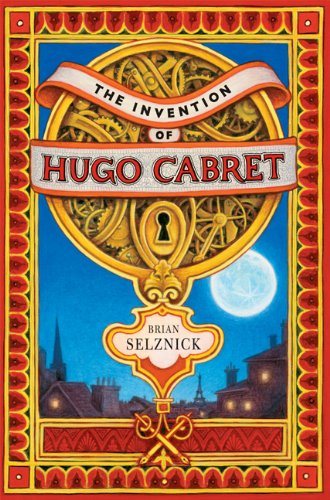My Lists
Featured Lists
REVIEWS
Library Journal
Reviewed on October 6, 2011
The fantasy and surprise of The Night Circus is nicely echoed in the delightful mixture of forms that Brian Selznick blends in his story of Hugo, a 12-year-old orphan who lives within the walls of a Paris train station. While Selznick's novel is ostensibly for younger readers, it should please adult fans of Morgenstern with its invitation to wonder and its focus on characters that hold answers for each ...Log In or Sign Up to Read More
on onOctober 6, 2011 | Booksmack!
The fantasy and surprise of The Night Circus is nicely echoed in the delightful mixture of forms that Brian Selznick blends in his story of Hugo, a 12-year-old orphan who lives within the walls of a Paris train station. While Selznick's novel is ostensibly for younger readers, it should please adult fans of Morgenstern with its invitation to wonder and its focus on characters that hold answers for each ...Log In or Sign Up to Read More
School Library Journal
Reviewed on March 1, 2007
Gr 4-9 With characteristic intelligence, exquisite images, and a breathtaking design, Selznick shatters conventions related to the art of bookmaking in this magical mystery set in 1930s Paris. He employs wordless sequential pictures and distinct pages of text to let the cinematic story unfold, and the artwork, rendered in pencil and bordered in black, contains elements of a flip book, a graphic novel, and film. It opens with a small square depicting a full moon centered on a black spread. As readers flip the pages, the image grows and the moon r...Log In or Sign Up to Read More
Horn Book Magazine
Reviewed on March 1, 2007
Here's a dilemma for the Newbery committee...and the Caldecott: what do you do with an illustrated novel in which neither text nor pictures can tell the story alone? Not to mention the drama to be found in the page turns themselves. A brief introduction sets the time (1931) and place (Paris) and invites readers to imagine they're at the movies. And with a turn of the page, they are, as, over a sequence of twenty-one double-page wordless spreads, a story begins. A picture of the moon gives way to an aerial shot of Paris; day breaks as the "camera" moves into a shot of a train station, where a boy makes his way to a secret passage from which, through a peephole, he watches an old man sitting at a stall selling toys. Finally, the text begins: "From his perch behind the clock, Hugo could see everything." The story that ...Log In or Sign Up to Read More
Horn Book Guide
Starred Review on January 1, 2007
Over a sequence of twenty-one double-page wordless, illustrated spreads, a story begins. The tale that follows is a lively one, invol...Log In or Sign Up to Read More




